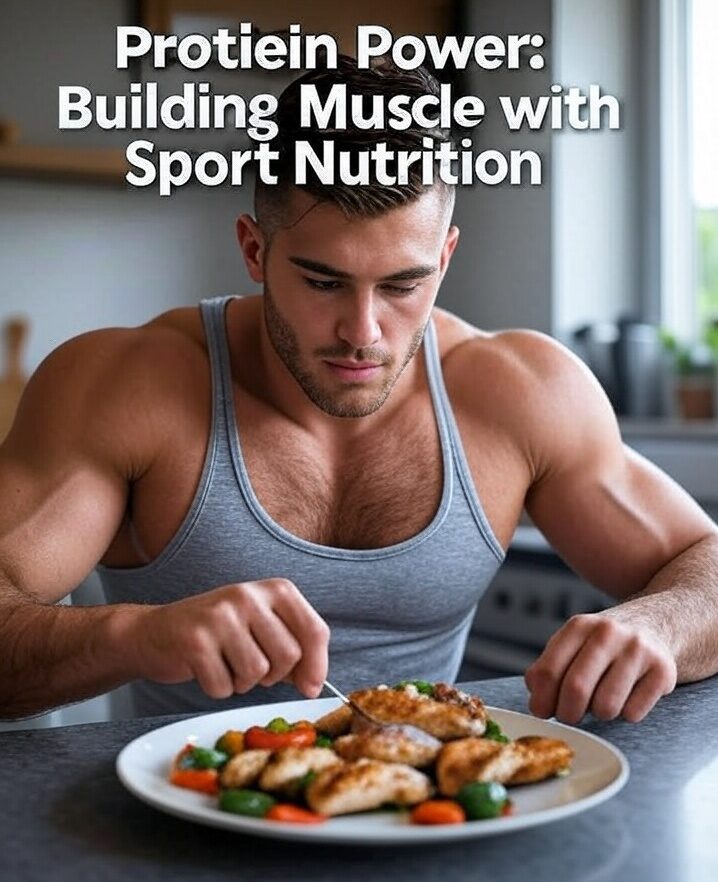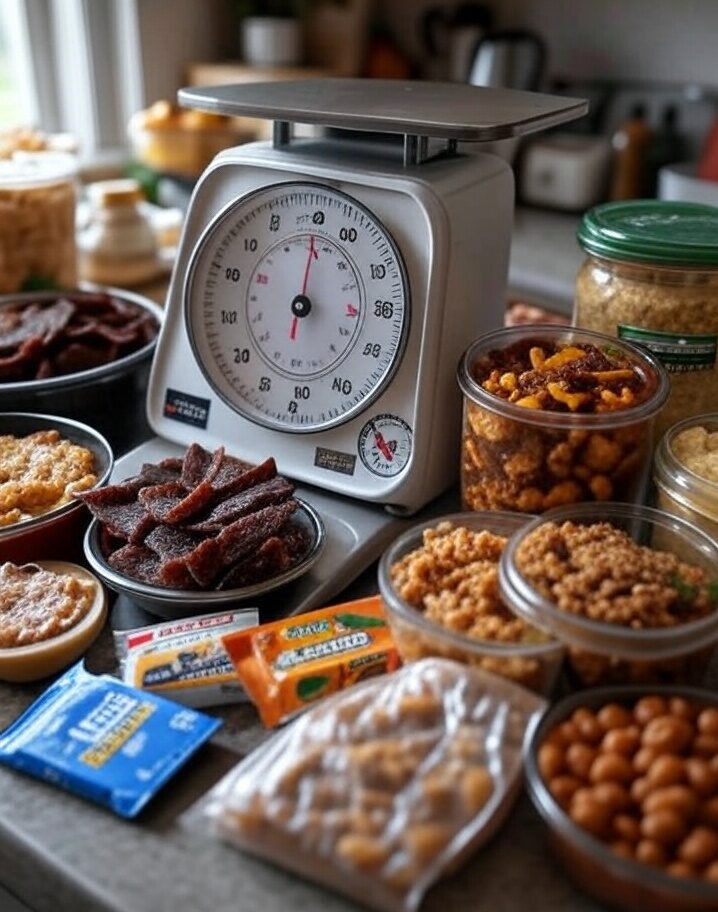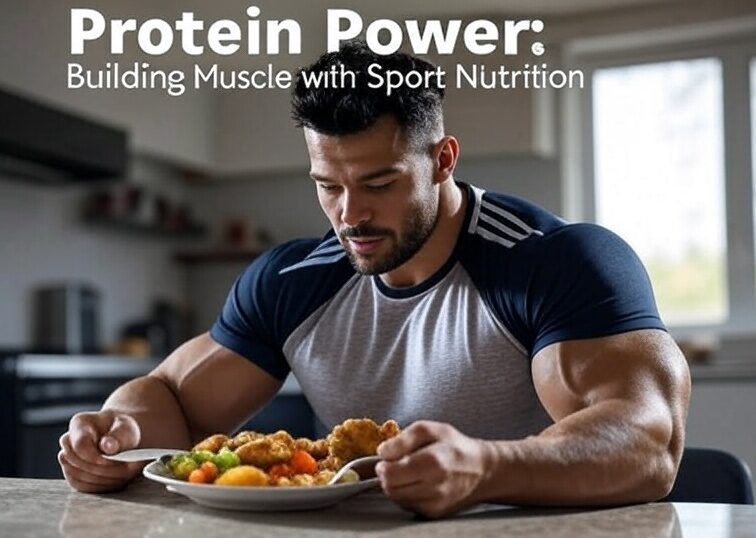Building muscle is a goal for many athletes, and protein stands as the cornerstone of that journey. Protein for muscle building goes beyond just lifting weights—it’s about fueling repair, growth, and recovery with the right nutrition to unlock your potential. As a professional doctor and nutritionist with expertise in sport nutrition, I’ve witnessed how strategic protein intake can transform strength gains and boost endurance, turning effort into impressive results. This article delves into the power of protein for muscle building, highlighting its critical role in muscle repair nutrition and providing practical food examples to enrich your diet. For an overview of protein’s impact, see Examine.com’s Protein Guide
. Whether you’re a weightlifter, a CrossFit enthusiast, or simply aiming to enhance muscle mass, these insights will guide your progress.
Let’s explore how to harness protein-rich foods to maximize your training results and support long-term optimal muscle growth. From meal planning to recovery, this guide has you covered. What’s your favorite protein source? Share below to kick off the discussion—let’s inspire each other’s muscle-building journeys!

Section 1: The Role of Protein in Muscle Repair
Protein is essential for repairing muscle fibers damaged during exercise, a process that drives muscle repair nutrition and fuels growth. After a workout, microtears form in your muscles, and protein delivers key amino acids—particularly leucine—to rebuild stronger, more resilient tissue. For athletes, a daily intake of 1.6-2.0g of protein per kilogram of body weight supports this recovery, laying the foundation for progress.
I’ve studied how inadequate protein intake can stall gains, leading to fatigue and performance plateaus, while optimal levels accelerate muscle development. Protein for muscle building kickstarts this repair process within hours, making timing a critical factor in maximizing results. For a deeper dive into protein science, see the International Society of Sports Nutrition’s Protein and Exercise Guide
This makes protein a non-negotiable element of a strength training diet, ensuring your body adapts and grows stronger with each session. My research highlights how this nutrient bridges the gap between effort and achievement, transforming your training into tangible strength. This section sets the stage for understanding why prioritizing protein is essential for anyone serious about muscle building.
Have you noticed a difference with protein timing? Let me know below—your insights could help others refine their approach!
Section 2: Timing Your Protein Intake
Timing matters when it comes to protein for muscle building, turning your nutrition into a powerful tool for growth. Aim to consume 20-40g of protein within 30-60 minutes post-workout to maximize muscle repair nutrition, capitalizing on the body’s heightened sensitivity to amino acids during this window. Pre-workout, a 10-20g serving can prime your muscles for optimal effort, setting the stage for a productive session. I’ve worked with weightlifters who doubled their recovery speed by aligning their intake with these critical windows, a strategy rooted in post-workout protein science that I’ve seen yield consistent results.
Beyond these key moments, consistency across meals—spreading 20-30g every 3-4 hours—further optimizes optimal muscle growth by maintaining a steady supply of amino acids.To learn about carb timing for energy, explore our Carbohydrate Timing for Athletes
This approach ensures your muscles are fueled throughout the day, not just after exercise. My experience shows that mastering this timing can transform your training outcomes, bridging the gap between effort and gains.
How do you time your protein? Share your routine below—whether it’s a post-workout shake or a pre-lift snack, let’s exchange ideas to fine-tune our strategies!
Section 3: Top Protein-Rich Foods for Muscle Building
Incorporate protein-rich foods to fuel protein for muscle building effectively, giving your muscles the raw materials they need to grow. Chicken breast delivers 26g of protein per 100g, making it an ideal post-workout meal to kickstart recovery. Eggs offer 6g per large egg, with yolks adding healthy fats for sustained energy, perfect for a versatile breakfast. Greek yogurt provides 10g per 100g, serving as a quick, creamy snack any time of day. I’ve recommended salmon—25g per 100g—to athletes for its potent combo of omega-3s and protein, significantly boosting muscle repair nutrition and overall recovery.
For plant-based options, lentils supply 9g per 100g, offering a hearty alternative that aligns with a strength training diet. These choices bring variety and accessibility, fitting seamlessly into diverse routines. My experience shows that diversifying your protein sources not only supports muscle growth but also enhances meal enjoyment. Whether grilled, blended, or boiled, these foods are your allies in building strength.
Which protein food do you love? Let’s swap recipes below—share your favorite preparation to inspire the community!

Section 4: Combining Protein with Other Nutrients
Protein works best when paired with carbs and fats for protein for muscle building, creating a synergistic effect that amplifies your gains. A post-workout shake blending 20g of protein with 40g of carbs—such as a banana and whey—restores glycogen levels and speeds recovery, fueling your next session. Adding nuts and seeds to a chicken salad introduces healthy fats, boosting energy and supporting sustained performance. I’ve seen bodybuilders thrive by mastering these combinations, noting faster muscle repair nutrition and stronger lifts as a result.
This nutrient synergy transforms your diet into a powerful tool for protein for muscle building, enhancing overall strength and endurance. Incorporating a strength training diet rich in balanced macros ensures your muscles receive the full spectrum of support needed for optimal muscle growth. My experience with athletes highlights how this approach—pairing protein with the right carbs and fats—can turn meals into a strategic advantage, maximizing every workout’s potential.
What do you pair with protein? Share your combo below—whether it’s a shake or a meal, let’s exchange ideas to elevate our nutrition game!
Section 5: Practical Tips for Protein Success
To maximize protein for muscle building, plan your meals with a daily protein target in mind, aligning your intake with your training goals. Use a food scale or a nutrition app to track accurately, ensuring you hit the 1.6-2.0g per kilogram recommendation. I’ve helped CrossFit athletes set these targets, and with consistency, they’ve seen their gains improve by 15%, a testament to disciplined planning. Snack on protein bars or jerky between meals to maintain steady levels, and cook in bulk to save time while keeping nutrition on track.
These tips, paired with a strength training diet, ensure steady progress in muscle repair nutrition, turning your efforts into measurable muscle growth. Prep meals ahead, carry portable options like nuts, and adjust portions based on workout intensity. My experience shows that athletes who adopt these habits transform their routines, making protein for muscle building a seamless part of their lifestyle. This approach builds a foundation for long-term success.
What’s your protein planning trick? Let’s exchange tips below—share your favorite tool or strategy to inspire the community!

Conclusion
Harnessing protein for muscle building can elevate your strength and recovery, turning your hard work into tangible results. This guide has explored its vital role in muscle repair, optimal timing, top food choices, nutrient pairing, and practical tips, equipping you with a robust strategy to fuel your gains. As a nutritionist, I’ve watched athletes transform their physiques with muscle repair nutrition, making protein a cornerstone of their success and a catalyst for growth. Dive into linked posts for deeper insights, and adapt these ideas to suit your unique training regimen.
Your journey to optimal muscle growth starts now, and with dedication, you can refine this approach to maximize your potential. Keep building, whether you’re lifting heavier or recovering faster. This is your opportunity to shape a stronger future. Which tip will you try first? Share below to inspire others—let’s build a community driven by protein-powered progress!



